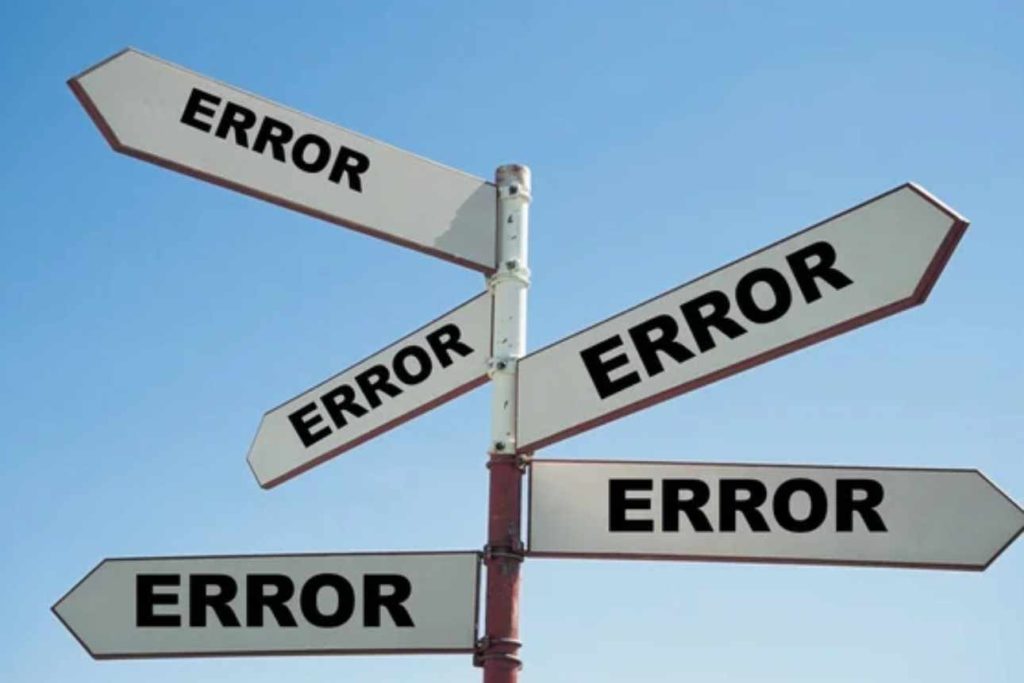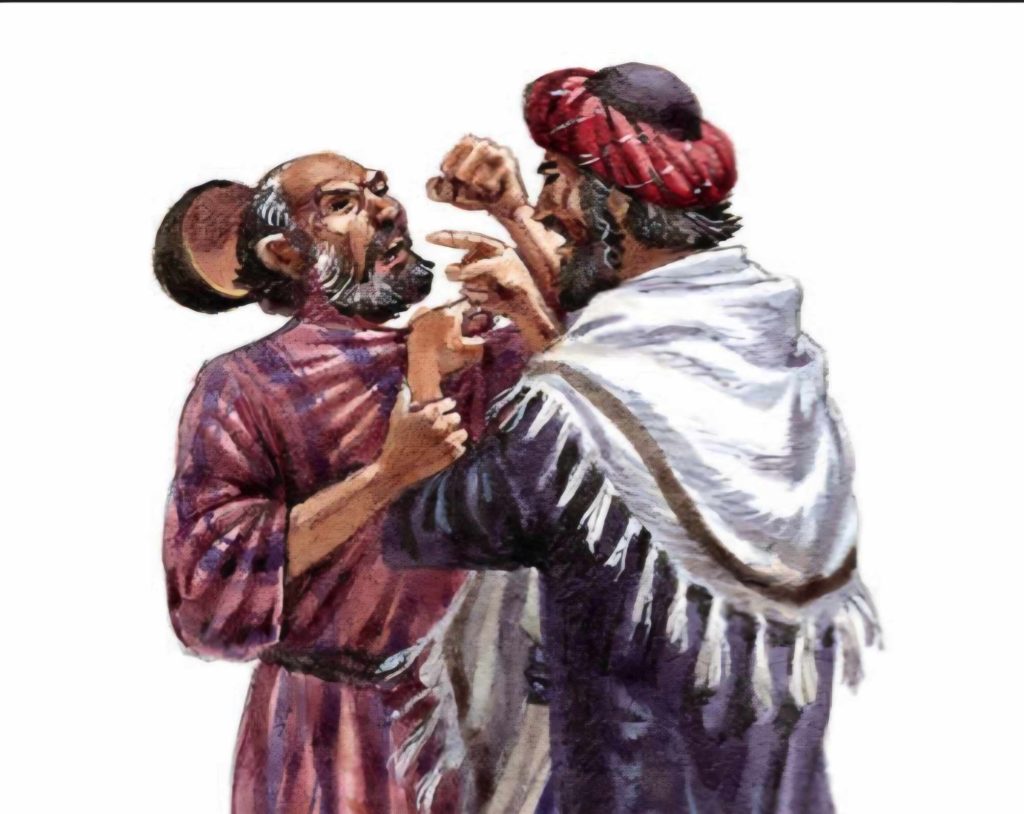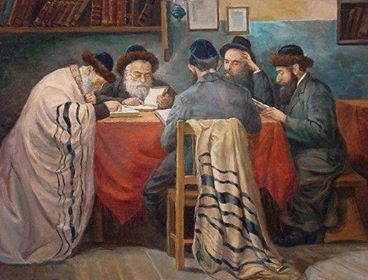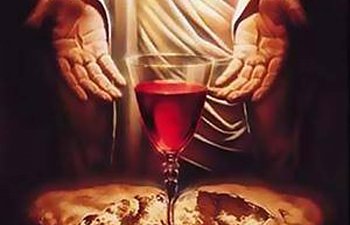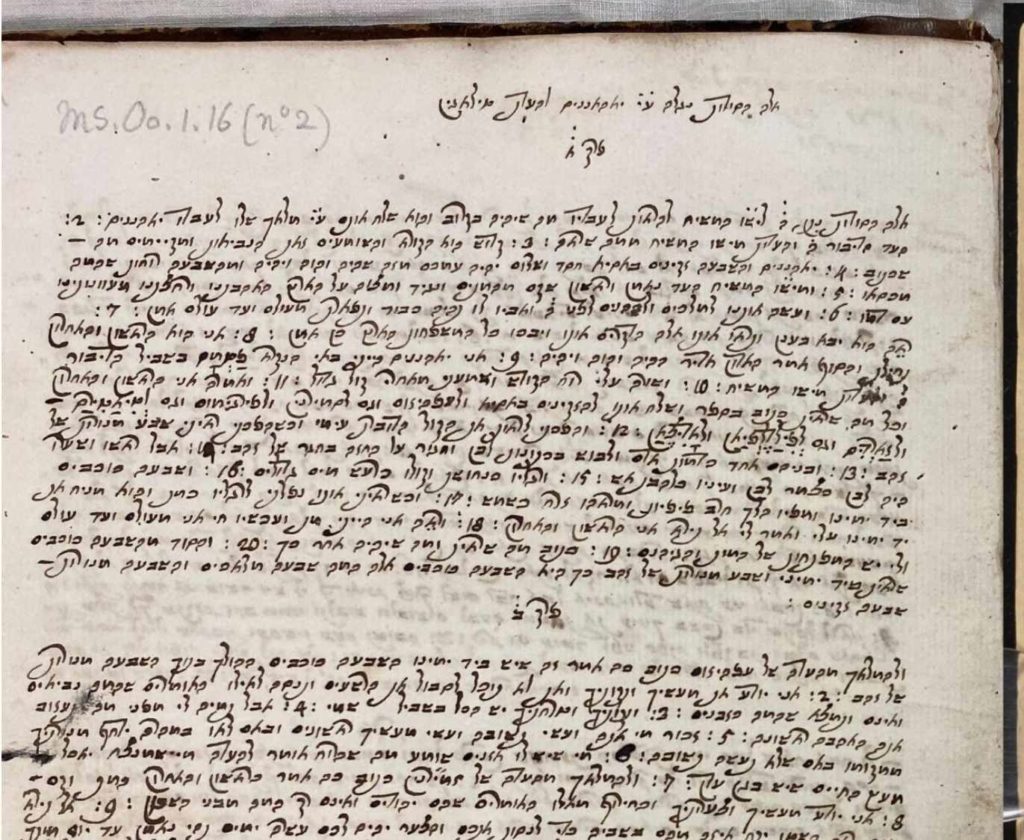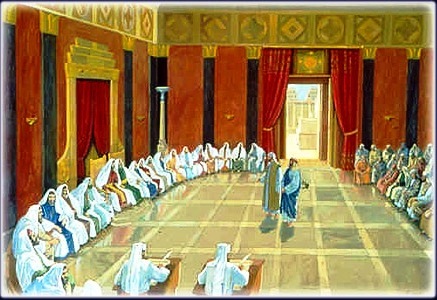
Understanding 1Corinthians Part 4
The Mind of Messiah
By
James Scott Trimm
In Part 1 we demonstrated that the Assembly at Corinth was having a problem common to Second Temple Era Judaism, factionalism. In Part 2 we established that the first four chapters of 1Corinthians are formatted in a formal form of Midrash known as a Proem Homiletic Midrash, and that this Midrash is a compound and extended Proem Homilatic Midrash. In part 3 we explored the meaning of the first part of the midrash (comprising 1Cor. 1:18-31) and especially Paul’s use of Isaiah 29:14 from a Jewish perspective.
The problem at Corinth is factionalism, a problem plaguing Second Temple Era Judaism. Second Temple Era had been fractured into various sects and factions that could not agree on halacha. As we saw in part 3, the Talmud says “They will not find a clear halachah or a clear Mishnah in any place.” and as the Nazarene Commentary on Isaiah refers to “very bad decrees” (גזרות רע מאוד). Paul cited Isaiah 29:14 because Isaiah 29 is a prophecy that Israel would suffer exactly this fate.
In his second Midrash in this compound Proem Homiletic Midrash, Paul will tell us about the solution to this problem. This second sub-midrash comprises 1Corinthians 2:6-16 and expounds upon Isaiah 64:3(4) in light of Isaiah 40:13-14.
The Prophet Isaiah writes:
And whereof from of old men have not heard,
nor perceived by the ear, neither has the eye seen
an Elohim beside You, who works for him that
waits for Him.
(Is. 64:3(4))
There is a Baraita on this verse that appears twice in the Talmud once in the Midrash Rabbah and four times in the Zohar.
The following is the Baraita as it appears in the Talmud:
What is the meaning of “Eye has not seen” (Is. 64:3)
Rabbi Joshua ben Levi said:
This is the wine that has been kept
in its grapes from the six days in the beginning.
(b.Berakot 34b; b.Sanhedrin 99a)
The phrase “wine that has been kept” in the Hebrew is Yayin HaMeshumar “wine of keeping”. The tradition of the Yayin HaMeshumar runs deep in traditional Judaism. It is the wine that will be served at the Messianic Feast when the Messiah re-establishes the Kingdom of Israel on earth.
In his first letter to the Corinthians Paul also quotes, or perhaps we should better say paraphrases Is. 64:3(4) as follows:
But as it is written:
The eye has not seen, and the ear has not heard,
and into the heart of a son of man has not entered
that which Eloah had prepared for those who love Him.
(1Cor. 2:9 HRV)
Note that Paul’s citation is influenced by the Baraita as the actual text of Isaiah says that “eye has not seen… an Elohim beside you” but Paul says “Eye has not seen… that which Eloah has prepared for those who love Him.” And the Baraita has “Eye has not seen… the wine which has been kept…”.
Now lets look at Paul’s quote in context:
But we speak the wisdom of Eloah
in a mystery that was hidden
And [that] Eloah had before separated
from before the ages for our glory.
That not one of the authorities of this world knew,
for if they had known it,
they would not have crucified the Adon of glory.
But as it is written:
The eye has not seen, and the ear has not heard,
and into the heart of a son of man has not entered
that which Eloah had prepared for those who love Him.
(1Cor. 2:7-9 HRV)
When we look at Paul’s context we see an even greater influence from the Baraita of the Yayin HaMeshumar “…a mystery that was hidden and that Eloah had before separated from before the ages… eye has not seen… that which Eloah has prepared for those who love Him.”
It is clear that Paul here must be referring to the Yayin HaMeshumar as his audience is, no doubt, familiar with this Baraita to Is. 64:3.
It is the Yayin HaMeshumar that Yeshua refers to when we read:
And afterwards he took the cup, and blessed,
and gave to them, saying,
“Drink you all of it,
for this is my blood of the New Covenant,
which is shed for many to atone for sinners,
And I tell you, hereafter I will not drink of the fruit of the vine,
until that day when I drink it new with you in the kingdom
of my Father which is in heaven.”
(Mt. 26:27-29)
The Yayin HaMeshumar is the blood of the New Covenant. At the Passover Sader the wine represents the blood of the lamb. Note that we read in Revelation that Messiah is the lamb slain “before the foundation of the world.” (Rev. 13:8) his blood is the wine kept in its grapes from the six days in the beginning.
In the Apocryphal Gospel of Thomas Yeshua is quoted as saying:
Yeshua said, “I shall give you what no eye has seen
and what no ear has heard and what no hand has touched
and what has never occurred to the mind of man.
(Gospel of Thomas 17)
Note that in 1Cor. 1:18-20 the same “wisdom” of which we are later told is “…in the mystery that was hidden … before separates from before the ages… which Eloah had prepared for those who love him.” (1Cor. 2:7-9) is also the “wisdom” which “takes away the wisdom of the wise” in 1Cor. 1:19 quoting Isaiah 29:14. In Isaiah 29:15 this wisdom is the contents of the sealed book (Is. 29:11-12, 14, 18). In Revelation this book is opened by the “lamb as if it was slain” (Rev. 5:6) a lamb slain “before the foundation of the world.” (Rev. 13:8).
This is the wine that will be served at the “marriage supper of the lamb” (Rev. 19:7) the great Messianic Banquet and Passover Sader.
In 1Corinthians, Paul has brought up the Yayin HaMeshumar at the beginning of his letter because he will be addressing this wine throughout his letter. In 1Cor. 5 he will discuss the recent Passover Sader at Corinth. In 1Cor. 11:23-34 he addresses the significance of the Passover and especially being worthy to drink the wine which is the Yayin Hameshumar.
In 1Cor. 15:54 he cites Isaiah 25:8 a passage of Isaiah which immediately follows the description of the Messianic Banquet in Isaiah 25:6-7:
6 And in this mountain shall YHWH of hosts make unto all people a feast of fat things, a feast of wines on the lees, of fat things full of marrow, of wines on the lees well refined.
7 And he will destroy in this mountain the face of the covering cast over all people, and the vail that is spread over all nations.
8: He will swallow up death in victory; and the Adonai YHWH will wipe away tears from off all faces; and the rebuke of his people shall he take away from off all the earth: for YHWH has spoken it.
Notice that the Yayin HaMeshumar is something which “from of old men have not heard, nor perceived by the ear, neither has the eye seen” (Is. 64:3) elsewhere Isaiah writes:
So shall he sprinkle many nations, kings shall shut their mouths
because of him, for that which had not been told them shall they see
and that which they have not heard shall they perceive.
(Is. 52:15)
Thus the “suffering servant” song of Isaiah 53 is the message that “eye has not seen”, it is the Yayin HaMeshumar.
The Midrash Rabbah to Num. 13:2 (500) says:
Because he bared his soul unto death (Is. 53:12)
and bruised themselveswith the Torah which is sweeter than honey,
the Holy One, blessed be He, will hereafter give them to drink
of the wine kept in its grapes since the six days in the beginning….
(Midrash Rabbah to Numbers 13:2 (500))
Thus Paul writes:
But we speak the wisdom of Eloah
in a mystery that was hidden
And [that] Eloah had before separated
from before the ages for our glory.
That not one of the authorities of this world knew,
for if they had known it,
they would not have crucified the Adon of glory.
But as it is written:
The eye has not seen, and the ear has not heard,
and into the heart of a son of man has not entered
that which Eloah had prepared for those who love Him.
(1Cor. 2:7-9 HRV)
Not only is the Yayin HaMeshumar the blood of the Messiah, but it is more. It is the “mystery” of which the blood of Messiah is only part:
The Zohar says:
The Tzadik (The Righteous) is the Yesod (foundation) in Yah,
the mystery (SOD) which is the wine which has been kept
in its grapes from the six days in the beginning.
(Zohar; Roeh M’haimna on Pinchas; 3:236a)
And in regards to the banquet for the righteous in the time to come, the Zohar says:
It has been taught: Rabbi Yose said, “The wine preserved in it’s grapes since the six days of creation– ancient matters not revealed to anyone since the day the world was created, but destined to be revealed to the righteous in the time to come. This is the significance of the drinking and the eating; certainly it is so!
(Zohar; Midrash Ha-Ne’lam 1:135b)
There is a clear connection here because SOD (“mystery”) has a gematria (numerical value) of 70 which is also the gematria of YAYIN (“wine”). Just as the Zohar identifies the “mystery” with the Yayin HaMeshumar, so does Paul in 1Corinthians.
For Paul goes on to further identify the Yayin HaMeshumar as follows:
10 But Eloah has revealed [it] to us by his spirit, for the spirit searches into everything, even the deep things of Eloah.
11 For who is the son of man who knows what is in a son of man except the spirit of the son of man that [is] in him? So also, that which is in Eloah, no man knows except the Spirit of Eloah.
12 Now we have not received the spirit of the world, but the spirit that is from Eloah, so that we might know the gifts that were given to us from Eloah;
13 Which also we speak, not in the teaching of words of the wisdom of sons of men, but in the teaching of the spirit, and to spiritual men we compare spiritual things.
14 For the son of man who is in the nefesh does not receive spiritual things, for they are foolishness to him, and he is not able to know that which is judged spiritually.
15 Now the spiritual man judges all things, and is not judged from man.
16 For who knows the mind of YHWH that he might instruct him? (Is. 40:13) But we have the mind of the Messiah.
(1Cor. 2:10-16)
Paul identifies the Yayin HaMeshumar with the “words of wisdom” (2:13) as well as the “mind of YHWH” or the “mind of Messiah” (1Cor. 2:16) and with the spiritual “gifts” (1Cor. 2:10-16) which he will elaborate upon later in the letter (1Cor. 12-14).
Returning to the word “sod” and the gematria of seventy. Seventy is also the number of the elders of the Sanhedrin, and the word “sod”can also mean “intimate union, circle, council” or “deliberation, counsel” (see A Dictionary of the Targumim, the Talmud Babli and Yerushalmi, and the Midrashic Literature; Marcus Jastrow, PH. D. Litt. D.; p. 961).
Paul cites Isaiah 64:3(4) as the solution the the problem of “They will not find a clear halachah or a clear Mishnah in any place.” and as the Nazarene Commentary on Isaiah refers to “very bad decrees” (גזרות רע מאוד) derived from Isaiah 29:14 in the first part of the midrash. The “Yayin Meshumar” associated with the Jewish understanding of Isaiah 64:3(4) points to the blood of Messiah and to the SOD, the “mystery” which Paul identifies with the “mind of Messiah” and which is associated also with the council seventy elders of the Sanhedrin who deliberate and give counsel.
We read in the Torah:
Judges and officers shall you make you in all your gates, which YHWH your Elohim gives you, tribe by tribe. And they shall judge the people with righteous judgment.
(Deut. 16:18 HRV)
8 If there arise a matter too hard for you in judgment, between blood and blood, between plea and plea, and between stroke and stroke–even matters of controversy within your gates–then shall you arise, and get you up unto the place which YHWH your Elohim shall choose.
9 And you shall come unto the cohanim, the L’vi’im, and unto the judge that shall be in those days, and you shall inquire. And they shall declare unto you the sentence of judgment.
10 And you shall do, according to the tenor of the sentence, which they shall declare unto you from that place which YHWH shall choose, and you shall observe to do according to all that they shall teach you.
11 According to the Torah which they shall teach you, and according to the judgment which they shall tell you, you shall do. You shall not turn aside from the sentence which they shall declare unto you, to the right hand nor to the left.
12 And the man that does presumptuously, in not hearkening unto the cohen, that stands to minister there before YHWH your Elohim, or unto the judge, even that man shall die, and you shall exterminate the evil from Yisra’el.
(Deut. 17:8-12 HRV)
The phrase “According to the Torah” in the Hebrew is על פי התורה which could literally be translated “according to the Oral Torah”. The word על means “about, concerning, according to”; the word פי means “mouth” or “oral”. and the word התורה means “the Torah”. This phrase is the source of the Hebrew phrase תורה שבעל פה “Oral Law” (פי is the construct form of פה). (There are two kinds of Oral Law: Oral Law from Sinai and these Judgments of the Court.)
This sheds light on an event recorded by Matthew:
15 And Yeshua said to them: And you … who say you, that I am?
16 Then answered Shim’on Kefa, saying, You are Messiah, the Son of the Living Elohim.
17 And Yeshua said to him: Happy are you Shim’on Ben Yonah, for this was not revealed to flesh and blood
but to you, when it was revealed to you by My Father which is in heaven.
18 And I tell you, that you are Kefa, and upon this rock I will build My assembly, and the gates of takh’ti will not prevail against you.
19 And to you will I give the keys of the Kingdom of Heaven, and whatever you shall prohibit on earth, shall be prohibited in heaven: and whatever you will permit on earth, has been permitted in heaven.
(Matthew 16:15-19 from DuTillet Hebrew)
The “Assembly” here refers the judges of the Torah court. Kefa is said to be given the “keys” because he is being appointed to the office of Av Beit Din (The Av Beit Din controlled who could enter the court and was said to hold the “keys”) . The Torah courts were headed by two individuals, a Nasi (president) and Av Beit Din (vice-president and sergeant of arms.) The words “prohibit” (אסור) and “permit” (מותר) are literally “bind” and “loose” and are idiomatic expressions in Hebrew used to refer to the authority of the judges to prohibit and permit activities.
We can see that this is the “assembly” to which Yeshua refers, by comparing with Matthew 18:
15 And if your brother sins against you, go and reprove him between you and him alone: and if he will hear you, you have won your brother.
16 But if he will not hear you, take to yourself one witness or two: that at the mouth of two or three witnesses, every word may be established.
17 And if he will not hear them, speak to him in the assembly: but if he neglects to hear in the assembly, let him be to you as a Goy or a transgressor.
18 Truly I tell you, all that you will prohibit on earth has been prohibited in heaven also, and all that you will permit on earth has been permitted in heaven also.
19 Again I tell you: If two of you might be worthy566 on earth567 as touching a thing that they will ask, it will be for them of My Father which is in heaven.
20 For in every place where two or three will assemble in My Name, there am I in the midst of them.
(Matthew 18:15-20 from DuTillet Hebrew)
Here again we see this “assembly” which has the power to “prohibit” (bind) and “permit” (loose). This time we see it in context of an assembly which receives the testimony of which “at the mouth of two or three witnesses, every word may be established.” quoting Deut. 19:15:
15 One witness shall not rise up against a man for any iniquity, or for any sin, in any sin that he sins. At the mouth of two witnesses, or at the mouth of three witnesses, shall a matter be established.
16 If an unrighteous witness rise up against any man, to bear perverted witness against him,
17 Then both the men, between whom the controversy is, shall stand before YHWH; before the cohanim and the judges that shall be in those days.
18 And the judges shall inquire diligently: and behold, if the witness be a false witness, and has testified falsely against his brother,
(Deut. 19:15-18 HRV)
This is the same “judges that shall be in those days” (Deut. 19:17) that we read about earlier in Deut 17:9 who give rulings that are על פי התורה i.e. תורה שבעל פה “Oral Law”.
In other words, Yeshua as Messiah designated his Emissaries as the “judges that shall be in those days” i.e. a Nazarene Sanhedrin.
We see this body meet, consider and make such a ruling In Acts 15. Here the Emissaries consider a matter of halacha (must gentiles be circumcised to be saved). We see that Ya’akov HaTzadik (James the Just) is presiding as Nasi, and Kefa is acting as Av Beit Din.
Paul is connecting the Yayin HaMeshumar to the “Mind of Messiah” and this Nazarene Sanhedrin, as the solution to the problem of factionalism.
Paul then extends the midrash (1Cor. 3:1-4:21) as described in Part 2, laying out his basis for presenting halacha to Corinth, and resolve the problem of factionalism. The second portion of the book (Chapters 5-16) deal with a variety of halachic issues, upon which Paul weighs in.

We need your help today! We have just lost $2,000 a month in income!
In these uncertain times, we need your support more than ever. The time is short, and there is much work to be done. As you might imagine, donations are low. If you can, please donate. This is no time to pull back from the great work in front of us!
As I have said to you many times, I look on this work as a co-operative one with me, and all of you combining our resources together in order to get the job done of helping to teach this great truth to all in the world who will listen. Thank you so much from the bottom of my heart for your continued support, you are the ones who make it all possible by your contributions and your prayers for our work. I truly appreciate your help in every way.
If you can make a one time donation of $500 or $1,000 dollars to support this work.
Donations can be sent by Paypal to donations@wnae.org or by Zelle, Go Fund Me, Bitcoin or Ethereum.
Click HERE to donate
Stay in touch by E-mail
By submitting this form, you are consenting to receive marketing emails from: . You can revoke your consent to receive emails at any time by using the SafeUnsubscribe® link, found at the bottom of every email. Emails are serviced by Constant Contact

